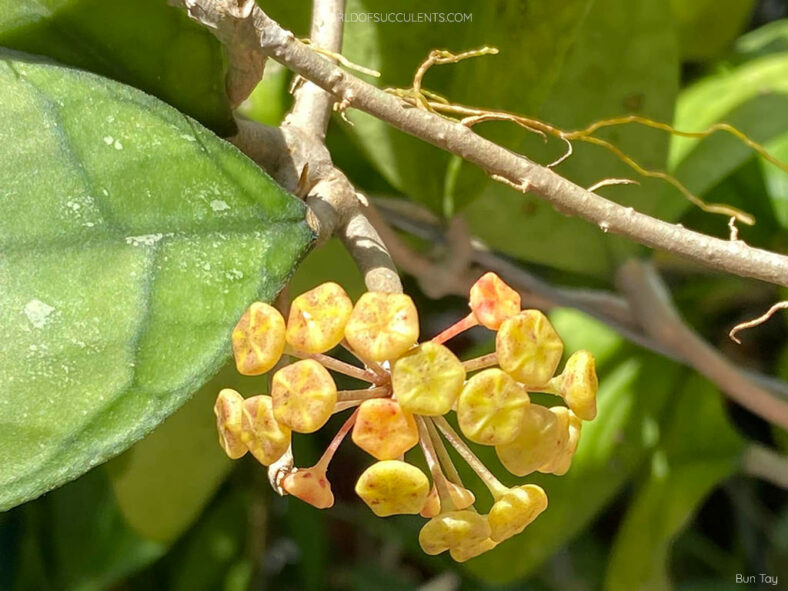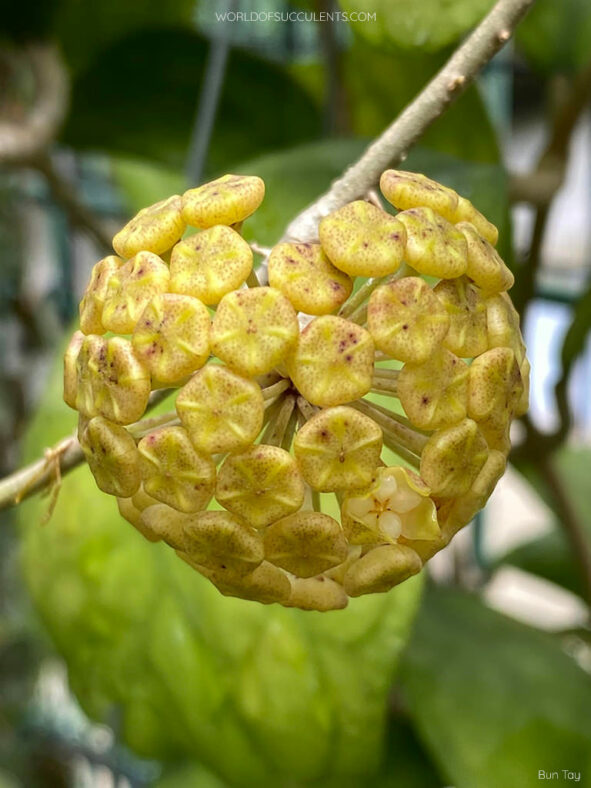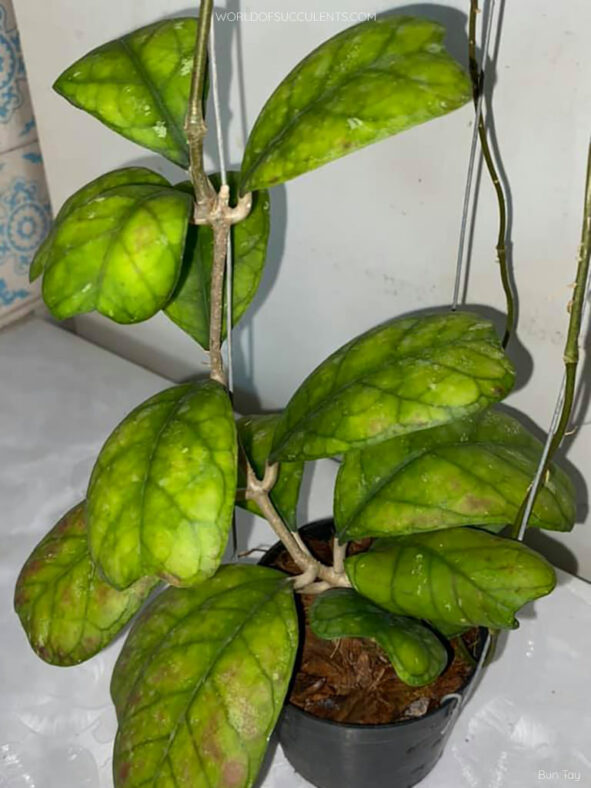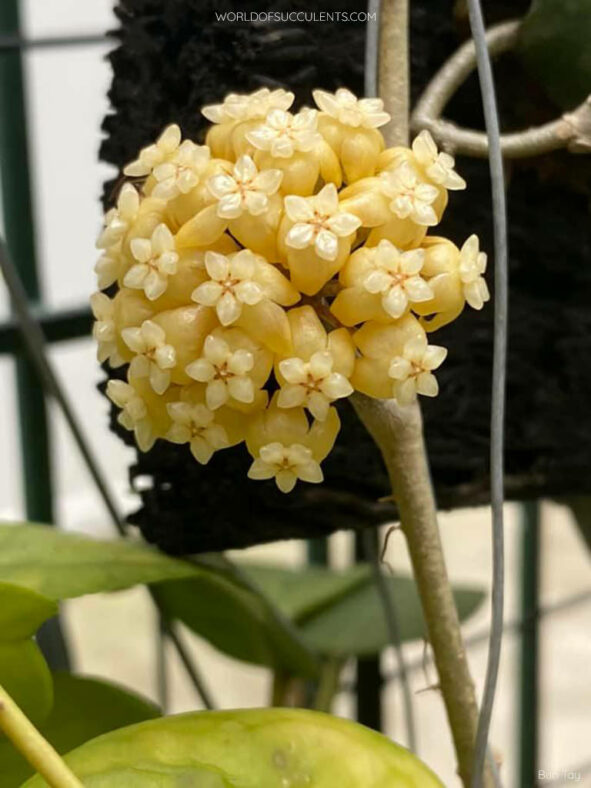Scientific Name
Hoya deykeae T.Green
Common Name(s)
Porcelain Flower, Wax Plant
Scientific Classification
Family: Apocynaceae
Subfamily: Asclepiadoideae
Tribe: Marsdenieae
Genus: Hoya
Etymology
The specific epithet "deykeae (dee-EW-kee-ee) honors Deyke van Donkelaar-Jannink, the wife of Ruurd van Donkelaar.
Origin
Hoya deykeae is endemic to the Indonesian island of Sumatra. It grows as an epiphyte or scrambling shrub.
Description
Hoya deykeae is a lovely vine with long, wiry stems and unique, heart-shaped, light green leaves with a beautiful darker green venation. It looks like a product from a cross between Hoya kerrii and Hoya callistophylla.
The lightly perfumed flowers are star-shaped, creamy yellow with a peach-colored center, and appear in dense rounded clusters from spring to late summer. The umbels typically have between 15 to 30 flowers.
Hoya deykeae was discovered in March 1990 by Ruurd van Donkelaar and Deyke van Donkelaar-Jannink.

How to Grow and Care for Hoya deykeae
Light: H. deykeae grows well indoors in bright indirect light but will tolerate pretty low light levels, although it becomes weak and leggy, produces fewer leaves, and may not flower without bright light.
Soil: Whatever soil you plant your H. deykeae in, it should be well-draining, provide excellent aeration, and not hold too much water.
Temperature: As a tropical plant, H. deykeae thrives in warm, humid climates. During the colder months, keep it away from drafty windows and doorways. It can withstand temperatures as low as 40 °F (4.4 °C). USDA Plant Hardiness Zones 11a to 11 b, 40 to 50 °F (4.4 to 10 °C).
Watering: Water regularly in spring and summer. Soak the soil thoroughly until the water drains out of the drainage holes. Then, let the soil dry out between waterings. H. deykeae is relatively dormant and needs only moderate watering in fall and winter.
Fertilizing: This plant is not a particularly heavy feeder. However, it appreciates some extra micronutrients and macronutrients. Therefore, feed with half-strength high-potassium fertilizer every two weeks or so during the growing season.
Repotting: As an epiphytic plant, H. deykeae has quite shallow root systems and does not require a deep container, nor it needs to be repotted frequently. It prefers growing a bit tight in its container. Therefore, repot in spring if it outgrows its container.
Propagation: You can easily get new plants from your existing H. deykeae by stem cuttings. Leaf cuttings can be more problematic. The best time to take cuttings is spring or summer when the plant is actively growing. The easiest method of propagation is by layering. Starting this plant from seeds is the simplest but the most time-consuming way of propagation. Sow the seeds in spring or summer in well-draining soil.
Learn more at How to Grow and Care for Hoya.
Toxicity of Hoya deykeae
H. deykeae is non-toxic to humans and pets.
Links
- Back to genus Hoya
- Succupedia: Browse succulents by Scientific Name, Common Name, Genus, Family, USDA Hardiness Zone, Origin, or cacti by Genus
Photo Gallery
Click on a photo to see a larger version.


